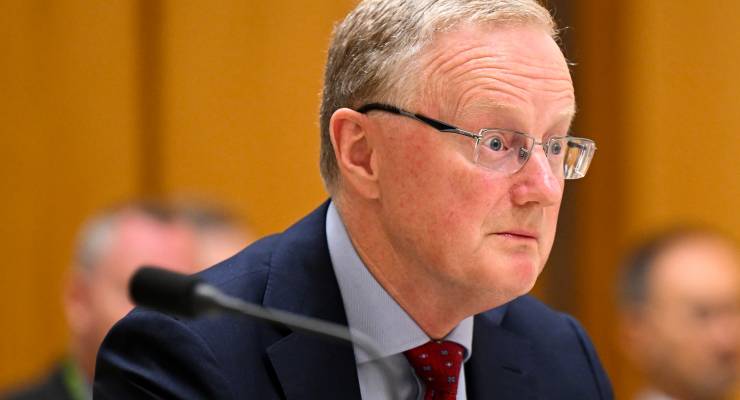
Dovish or hawkish? Another interest rate rise to come or several? Price-wage, wage-price spiral or no spiral? A weaker, weakening or stable economy? Is demand falling or not falling?
For all the linear thinkers out there, the Reserve Bank’s confused melange of contradictory statements, omissions, political spin and economic lingua franca in Tuesday’s official statement was something to endure, not behold.
If you’re feeling charitable, you might argue this wasn’t entirely the fault of the the RBA board. After all, the economy does seem to be sending mixed and conflicting signals of strength and weakness, all of which defy an effortlessly lucid picture of the state of things.
The obvious rejoinder, of course, is that perhaps less confusion would abound if we no longer applied the board’s blunt and self-serving lens to the inflation problem of today.
On the central bank’s modelling, published in February, Australia’s inflationary troubles mainly owe to supply-side pressures arising out of the war in Ukraine, the pandemic and disruptions caused by natural disasters — things outside the control of any central bank. And yet, curiously, no reference was made to this reality by its governor Philip Lowe on Tuesday as he laid bare his justification for yet another interest rate rise.
Another consideration Lowe omitted or ignored was the role of corporate profiteering in both extending and exacerbating the inflation crisis, for which the evidence is vast and growing. And yet another was the reality of falling real wages, which suffered the greatest deterioration on record in the December quarter.
On the contrary, said Lowe, wage growth was “continuing to pick up” and there was accordingly a need to remain “alert” to the spectre of a wage-price or price-wage spiral. Lowe said this, notwithstanding that wage growth is sitting at 0.8%, down from the preceding quarter of 1.1%.
Stepping back, the reason these particular considerations were excluded from or otherwise framed to suit the board’s narrative is fairly obvious. All, in their own way, conspire to undermine the received wisdom that it is institutionally the central bank, and it alone, to which we must look in periods of high inflation. And that, of course, is a problem if you’re unwilling to concede ground on this front.
Take, for example, this statement by Lowe in Senate estimates last month when asked about the need for government intervention through price caps or a super profits tax to deal with the inflation crisis.
“Fiscal policy most of the time is not as effective at managing [inflation],” he said. “Except for in extraordinary times, it’s not the best tool to use to manage aggregate demand. Interest rates is [sic] the more nimble tool. They’re a blunt policy tool, but they are nimble.”
Blunt, for sure, but nimble and most suitable? And is it really true, as Lowe implied, that these are not “extraordinary times” warranting fiscal intervention, given we know the inflation of today is being driven mainly by external forces that can’t credibly be tamed, much less controlled, by higher interest rates?
Increasingly, across society, neither of those questions is being answered in the RBA board’s favour.
“What we’ve got,” incoming CFMEU national secretary Zach Smith told Crikey, “is an inflationary crisis caused by [corporate] profiteering and supply-chain shocks led by COVID, led by a war in Ukraine — things that the Australian people aren’t responsible for.
“So we should be having a conversation about fiscal measures, like price controls and a super profits tax, but instead we’re just letting the RBA belt people over the head with interest rate increases and telling them to exercise wage restraint. It’s beyond a joke.”
Industry representatives from small business and the building and construction sector broadly echoed this position on Tuesday.
“Without other fiscal and policy measures to control inflation,” warned Master Builders Australia chief executive Denita Wawn, “further interest rate rises would leave the industry and homeowners bearing the brunt of the current economic challenges.
“There’s more that can be done to avoid locking a generation out of homeownership and exacerbating our housing supply and affordability challenges.”
To similar effect was the Australian Chamber of Commerce and Industry, whose chief executive Andrew McKellar said it was “vital”, as the months roll on, that “fiscal policy is working in tandem with monetary policy”.
“Households and small businesses have already stomached rapid rises and are yet to experience their full effect,” he said. “Failing to fully account for current conditions means that the Reserve Bank could move too aggressively and raise rates faster than the economy can handle.”
The tenor of the developing consensus, in other words, is that the bank is not equipped to deal with the inflation crisis alone and, what’s more, its preoccupation with desperately pretending otherwise is inflicting dangerous levels of economic pain.
That, however, is something it is unlikely to ever accept, as Lowe’s statement made plain. Rather than acknowledge the limits of the traditional economic models long relied on to analyse and understand inflation, as US Federal Reserve chair Jerome Powell has done, Lowe again tried to press all the conflicting data on the economy into the service of a misleading and confused narrative that serves the status quo.
Reading between the lines, yesterday’s explanation for the rate change runs much like this: the RBA knows but won’t concede it was wrong about excessive wage growth driving inflation, and so it will pretend wages are faring tolerably well (when they’re not) in order to justify another spooky warning about wage-price and price-wage spirals.
It also knows the economy and, in particular, consumer spending has slowed considerably — as intended — but unfortunately, it says, inflation is still running high, too many households have “substantial savings buffers” and too few people have lost their jobs. So expect more rate rises.
It also knows that the interest rate rises have coincided with the fastest increase in rents in years — but, it says, don’t blame us. Blame the low vacancy rate. And, finally, because it is the “job of the Reserve Bank to control inflation” — as Lowe put it in Senate estimates last month — and inflation is not expected to drop to the target rate until mid-2025, expect more interest rate rises.
And so it remains the case that even though inflation is mainly a supply-side problem the RBA is ill-equipped to fix, it will nonetheless continue to deny that reality, even if that means risking the lives and livelihoods of countless Australians to no end.
Is it time for Philip Lowe and the RBA board to get the heave-ho? Let us know by writing to letters@crikey.com.au. Please include your full name to be considered for publication. We reserve the right to edit for length and clarity.








The RBA is a convenient target for deflection of criticism (which is WHY they were created).
Looking at the situation today is to ignore the actual cause (causa causandis).
When the LNP barbarians deliberately buggered the Australian economy in the futile search for their “Back In The Black” fantasy, they were sucking cash out of the economy as fast as the RBA were trying to pump it in. The RBA only have a single lever – interest rates. Consequently they were forced to cut rates FOURTEEN TIMES in succession to try and keep the economy afloat.
Since the time that Glenn Stevens was in the chair, the RBA had been telling the “government” that cutting rates could only do so much without negative consequences, and that GOVERNMENT ACTION WAS REQUIRED to stimulate the economy.
Naturally, the ideological barbarians ignored the advice completely and continued with their merry fantasy……………..
……….until the wheels fell off, exposing their “Trickle-Down” bollocks for all to see.
The results predicted by the RBA all came to pass………….
………turbo-charged asset price inflation and when the Pandemic hit the RBA had already shot their only bullet, and were forced to come up with diabolical measures to try and counter it.
Their current series of interest rate rises is a reflection of a number of things………….
………..trying to counter inflation and trying to return interest rates to some semblance of normality before asset prices go through the roof and more mugs get sucked into the mortgage trap by the predatory Banks. Rates will HAVE to return to the long-term average before the next time the RBA is needed to bail out the government.
Anyone who got sucked in by the LNP three-card trick should sue them for Misfeasance in Public Office – particularly Abbott and Frydenberg.
So contrary to the opinion of He Who Must Not Be Named – the current round of rate rises sits squarely at the feet of his icons.
Quite so; Abbott and colleagues, Murdoch and slavescribblers, Morrison the Brainless and a Huge Cast, there is a core of Australian misery and degradation.
Incidentally, the “Stage 3” tax cuts are going to deliver inflation an almighty boost by pumping liquidity into an overheated market………………
………….which the RBA will have to counter.
(With the only tool at their disposal)
Yep. The real culprits here are the various governments that bought the Thatcher/Reagan neo liberalism and applied it with such zeal that the entire anlosphere is in disarray. Time for governments to get off their arses and do something at last. Forget globelism. Time to make stuff in Australia again. Time for a lot of things. Time to start doing something instead of just taking bribes from billionaires.
Partly a crisis of Lowe’s creation with his dopey forecast last year. Partly a crisis by Frydenberg with his dopey removal of responsible lending rules. Also generated by the mongrel press which demands lower taxes all the time.
Media… promote angst with headlines on inflation, housing etc. crises, but apart from headline data and anecdotal evidence, never really elaborate on details of inflation e.g. cause such as travel on top (?), nor how to deal with inflation sector by sector and relevant policies vs. retro monetarist demands on the RBA (which ultimately benefit business?).
Our media, like elsewhere i.e. UK, have become passive, don’t challenge RW economic policies and many seem to not understand basics of economics and data; maybe that’s why they are employed vs. highlighting the fact that ‘the trickle down effect’ is a myth…..
In answer to the question posed by the headline of this article, is there a box I can tick for ‘All three of the above’?
It’s a profit-price spiral, and the wrong people are getting punished for unbridled corporate profit-taking.
Yep………………
……..except the RBA only have a single weapon.
Constraining feral corporates is a government responsibility.
(Maybe introducing a “Windfall” tax like the UK……….)